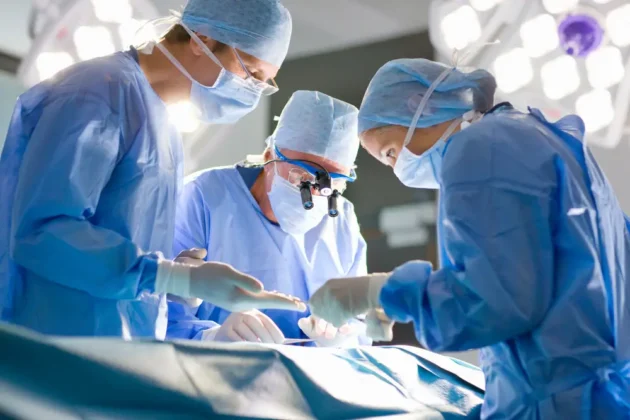
Are you experiencing sudden changes in your vision, seeing flashes of light, or noticing new floaters? These could be signs of a serious eye condition like retinal detachment. One effective treatment for this is scleral buckling, a surgical procedure designed to save your vision. In this blog, we’ll dive into what scleral buckling is, how it’s performed, and the costs involved.
So, if you’re concerned about your eye health, this is crucial information that could help you take timely action.
Contents
Scleral buckling is a surgical procedure specifically designed to repair a detached retina, a serious condition that can lead to vision loss if not treated promptly. This procedure is vital for restoring the proper position of the retina, the light-sensitive layer of tissue at the back of the eye that is crucial for vision.
These symptoms and signs typically indicate that the retina has detached or is at risk of detaching, necessitating immediate medical attention to prevent permanent vision loss.
The scleral buckling procedure is a targeted surgical method to address retinal detachment, designed to restore the normal position of the retina. Here’s an explanation of the treatment steps:
Patients are usually advised to take it easy for a few weeks, avoiding strenuous activities that might impact the eye. Follow-up visits are crucial to monitor the eye’s healing and to assess the reattachment of the retina.
While scleral buckling is a highly effective surgical procedure for repairing retinal detachments, it comes with potential risks and complications, including:
These risks underscore the necessity of careful post-surgical monitoring and adherence to follow-up care to address any complications promptly and ensure the best possible outcome from the surgery.
The cost of scleral buckling surgery can vary based on several factors, but it typically goes up to Rs 40,000. This estimate may be influenced by different aspects of the surgical procedure and care, such as the geographical location of the clinic, the complexity of the surgery, the surgeon’s expertise, medical equipment used, and post-surgery follow-up visits, medications, and care for any complications, if they arise.
So, it is advised that patients should discuss these factors with their healthcare provider to get a comprehensive understanding of the total costs involved in scleral buckling surgery.
1. Will my eye look normal after scleral buckle surgery?
Yes, in most cases, your eye will look normal after scleral buckle surgery. The buckle itself is placed around the eyeball and under the conjunctiva, which means it is not visible externally. However, you may experience some temporary swelling or redness in the eye area immediately following the surgery.
2. What material is used for a scleral buckle?
The scleral buckle is typically made from silicone, a flexible material that is well-tolerated by the body. Silicone bands or sponges are used because they can be easily shaped to conform to the eye’s surface and are durable enough to provide long-term support for the retina.
3. Restrictions after scleral buckle surgery?
After scleral buckle surgery, your doctor will likely advise you to avoid activities that could put additional strain on your eye while it heals. These restrictions might include avoiding heavy lifting, strenuous exercise, and any activities that could lead to a sudden increase in head or eye pressure. You may also be advised to avoid swimming or using a hot tub during the initial recovery period to prevent infection. It’s important to follow your surgeon’s specific instructions to ensure a smooth and safe recovery.
4. Will my eye look different after a scleral buckle?
Typically, your eye will not look noticeably different to others after a scleral buckle procedure. The buckle is placed around the eyeball beneath the conjunctiva, which means it’s not visible from the outside. However, some patients may notice minor changes in the shape of their eye, particularly if a large buckle has been used or if multiple buckles are involved. These changes are usually subtle and primarily noticeable to the patient rather than to others.